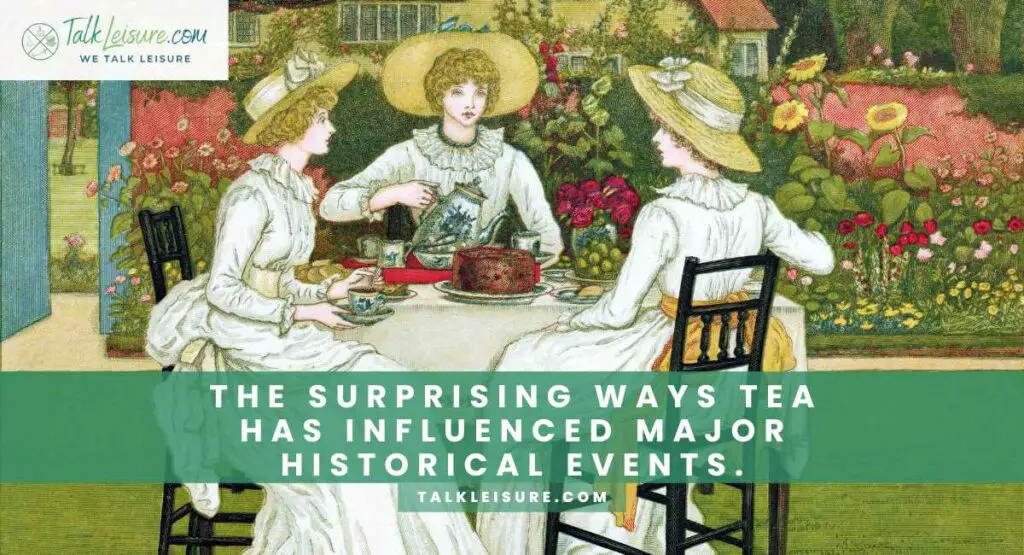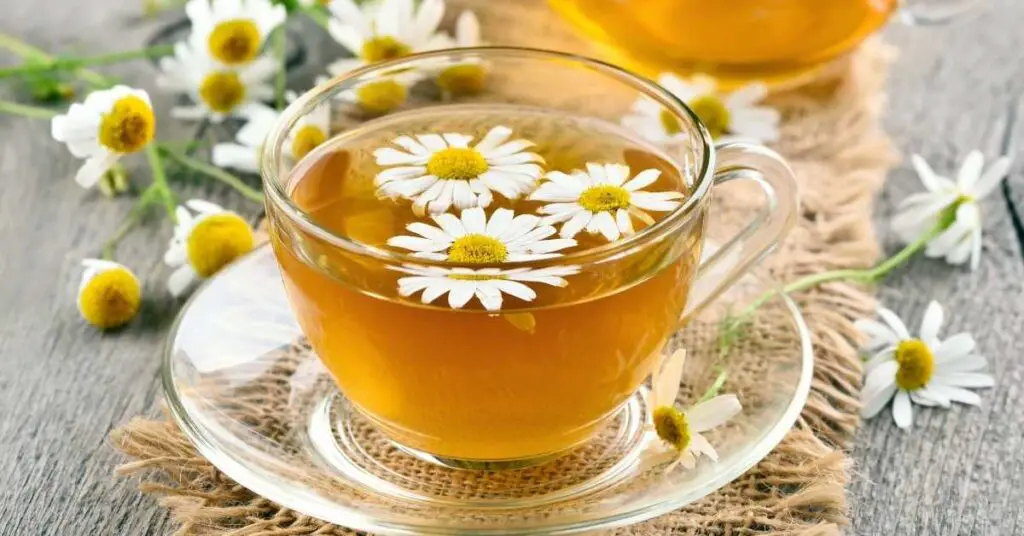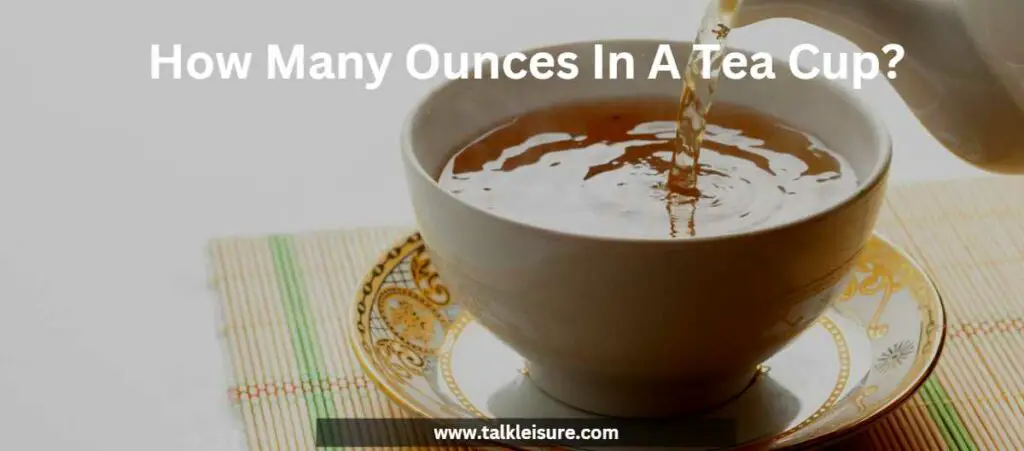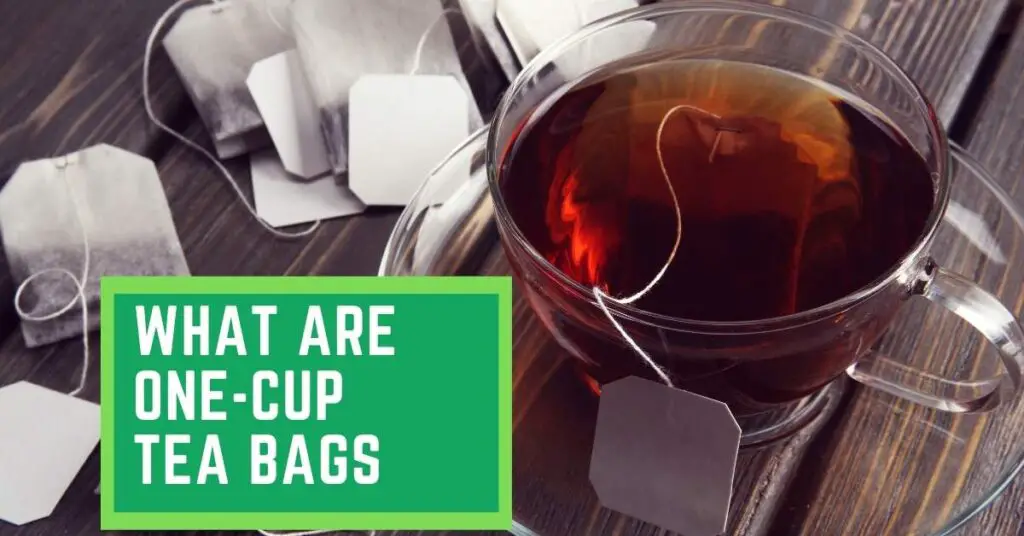Step into a world where a humble leaf transforms into a global phenomenon. Welcome to the captivating tale of tea, a beverage that transcends time and borders.
From ancient Chinese rituals to the bustling markets of the Silk Road, tea’s journey is a tapestry woven with history, culture, and revolution.
Join me as we navigate through Victorian parlors, sail with the East India Company, and witness the birth of modern tea culture.
Along the way, we’ll uncover the hidden health benefits and timeless traditions that make tea more than just a drink. Get ready to sip, savor, and explore the world of tea!
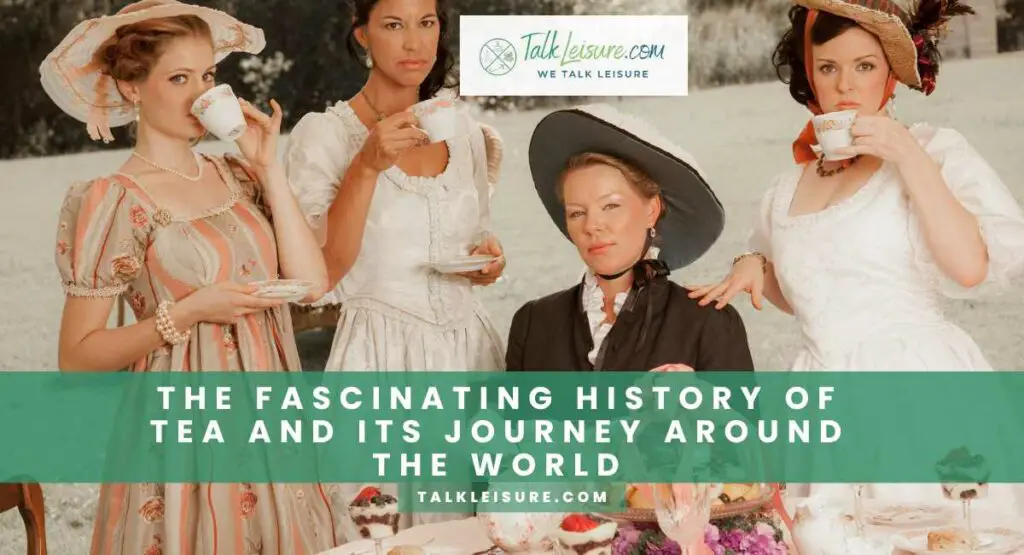
The Origins of Tea
In the misty hills of ancient China, a curious discovery unfolded: the magic of tea.
Legend has it that Emperor Shen Nong, a sage ruler and herbalist, stumbled upon this transformative leaf in 2737 BCE.
Intrigued by its fragrance, he decided to brew it. And just like that, tea was born.
But it wasn’t merely a beverage; it was a revelation. The Chinese soon recognized its medicinal properties, attributing them to its power to clear the mind and soothe the soul. It became entwined with philosophy, art, and daily life.
Tea wasn’t just a drink; it was a way of life. From humble teahouses to grand ceremonies, it wove its way into the fabric of Chinese culture. The Taoists even saw it as a path to enlightenment, believing that its consumption led to greater awareness and spiritual insight.
As time marched forward, tea’s popularity spread like wildfire, igniting a fervor that would cross oceans and continents.
But we’ll save that tale for the next chapter. For now, let’s bask in the ancient wisdom of China, where the story of tea began and where its magic still lingers today.
Ancient Tea Traditions: From China to Japan
The story of tea takes us on a journey back through the annals of time to ancient China. It was here, amidst mist-shrouded mountains and serene temples, that tea found its first true home. A simple infusion of tea leaves and hot water became a ritual that transcended generations.
As the emperors of China savored its delicate flavors, tea evolved into more than just a beverage. It became an integral part of Chinese philosophy, with scholars and monks extolling its virtues.
The elegant dance of the tea ceremony emerged, transforming the act of pouring a cup of tea into an art form.
And then, a cultural exchange that would shape the world of tea occurred: the journey from China to Japan. Buddhist monks, traders, and emissaries carried this precious cargo across the sea. In Japan, tea found a new canvas for expression.
The Way of Tea, or Chanoyu, emerged as a spiritual practice, blending Zen Buddhism with the mindful preparation and consumption of tea.
Tea’s Influence on Chinese Culture
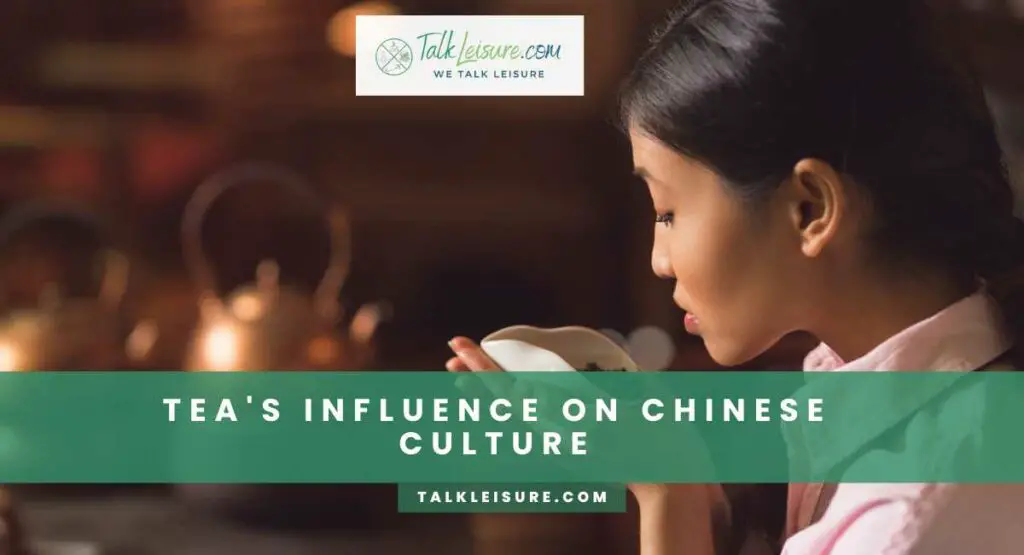
Tea’s influence on Chinese culture was profound. It was a symbol of refinement, a token of hospitality, and a cornerstone of social gatherings. Poetry was composed in its honor, and intricate tea sets were crafted with meticulous care.
The concept of “Cha Dao,” or the Way of Tea, became an integral part of Chinese philosophy, emphasizing harmony, respect, and tranquility.
Tea’s Spread to Japan: The Way of Tea
The arrival of tea in Japan was nothing short of transformative. Here, it became a spiritual practice, a means of meditation, and a way to cultivate presence in every sip.
The tea ceremony, led by the revered tea master, turned a humble cup of tea into a transcendent experience. The elegance and simplicity of Japanese tea culture continue to inspire and enchant to this day.
Tea in the Islamic World: From Medicine to Social Custom
Tea’s journey didn’t end in East Asia. Across deserts and caravanserais, it made its way to the Islamic world. Initially valued for its medicinal properties, tea soon became woven into the tapestry of social customs.
From bustling bazaars to serene courtyards, the sharing of tea became a gesture of hospitality, forging connections and creating moments of respite in a bustling world.
What Are the Milestones in Tea’s Global Expansion?

Tea on the Silk Road: Trade and Cultural Exchange
Imagine caravans laden with exotic goods traversing vast stretches of deserts and mountains, connecting civilizations in a grand tapestry of trade. Along this historic Silk Road, tea became a prized commodity.
It wasn’t just a beverage; it was a symbol of cultural exchange. As merchants and explorers mingled, so too did the traditions and flavors of East and West.
Tea in the Age of Exploration: European Encounters
Ah, the Age of Exploration, when intrepid sailors set forth on perilous voyages to distant lands. And what did they bring back? Among spices and silks, they introduced Europe to the wonders of tea.
The exotic allure of this leafy elixir captured hearts and palates, igniting a craze that would shape the course of history.
Tea in the New World: The American Experience
As settlers sailed across the Atlantic to the New World, they carried with them more than dreams of a better life—they brought tea. In colonial America, tea became a symbol of refinement and a cherished part of social gatherings. But it also played a surprising role in revolution. Who could forget the Boston Tea Party, a pivotal moment when tea crates met the harbor with a splash?
Tea and the Opium Wars: The Dark Side of Global Trade
Tea’s popularity came at a price—a price paid in opium. The Opium Wars were a dark chapter in the global trade of tea, where economic interests clashed with moral values. The aftermath reshaped trade dynamics and, in turn, the fate of nations.
The East India Company: Tea’s Gateway to the West
Ah, the East India Company, a behemoth of commerce that held sway over empires. It was through their endeavors that tea found a direct route to the palates of the West. Their legacy in the world of tea is as enduring as the brew itself.
Expansion through Asia
Expansion through Asia
Tea, once confined to the misty hills of China, embarked on an epic journey across the continent. Its voyage brought forth new traditions, influenced cultures, and sparked a love affair with this aromatic leaf.
Ancient Tea Traditions: From China to Japan
The tale begins in ancient China, where tea’s magic was first discovered. From here, it embarked on a voyage across the sea to the Land of the Rising Sun.
In Japan, tea evolved into a profound cultural practice, giving birth to the exquisite Way of Tea, a ritual that continues to enchant tea enthusiasts worldwide.
Tea’s Influence on Chinese Culture
Tea wasn’t just a drink; it was a way of life in ancient China. It permeated every facet of society, from royal courts to humble homes. It became a symbol of refinement, a tool for meditation, and a centerpiece of social gatherings. The philosophy of “Cha Dao” reverberated through the ages, emphasizing harmony, respect, and the art of being present.
Tea’s Spread to Japan: The Way of Tea
As tea crossed the waters to Japan, it underwent a transformation. Here, it became a spiritual practice, an art form, and a means of finding inner peace. The Way of Tea, or Chanoyu, emerged as a vehicle for Zen Buddhism, encapsulating a philosophy of simplicity and mindfulness in every carefully measured scoop.
Tea in the Islamic World: From Medicine to Social Custom
Tea’s journey didn’t stop in East Asia. It continued its odyssey, winding its way through the trade routes of the Islamic world. Initially prized for its medicinal properties, tea soon became a cornerstone of social interaction. From bustling bazaars to serene courtyards, the sharing of tea became a gesture of hospitality, forging connections and creating moments of respite in a fast-paced world.
How it became popular in British Culture

How it became popular in British Culture
Once a novelty from distant lands, tea found its way into the heart of British culture, leaving an indelible mark on society, politics, and daily life.
Afternoon Tea: A Victorian Tradition
Ah, the elegant affair of afternoon tea—a quintessentially British institution. It was during the Victorian era that this charming ritual emerged. Picture lace doilies, dainty sandwiches, and tiered cake stands adorned with pastries. Afternoon tea was not just a meal; it was a social event, a moment of respite in the busy day, and an opportunity to showcase one’s finest china.
Tea and the Boston Tea Party: Catalysts of Revolution
Tea played an unexpected role in the grand drama of American history. The Boston Tea Party, a rebellious act of protest, saw crates of tea tossed defiantly into the harbor waters. This iconic event ignited the flames of revolution, shaping the course of a nation and leaving an indelible mark on the story of tea.
Tea in Colonial India: Plantations and Production
As the British Empire expanded, so too did its love affair with tea. Colonial India became a pivotal player in the global tea trade.
Vast plantations sprawled across the hills, and production soared to meet the insatiable demand. This era not only transformed the landscape of India but also influenced the destiny of a nation.
Key Players in the Worldwide Tea Supply Chain
The story of tea wouldn’t be complete without acknowledging the modern influencers and innovators who continue to shape its journey across the globe.
Tea in Modern Times: Global Brands and Innovations
Fast forward to today, and you’ll find an array of global tea brands, each with their unique offerings and innovations. From classic blends to exotic infusions, these companies play a vital role in bringing tea to the masses. Discover the latest trends, from premium loose leaves to convenient tea bags, and witness how technology has revolutionized the way we brew and enjoy our favorite cuppa.
The Health Benefits of Tea: From Tradition to Science
Tea isn’t just a delightful beverage; it’s a treasure trove of health benefits. From antioxidants that combat free radicals to compounds that promote relaxation, the science behind tea’s therapeutic properties is as diverse as the leaves themselves.
Join us as we explore the traditional wisdom and modern scientific discoveries that underscore tea’s status as not just a drink, but a wellness elixir.
Tea Culture Today: From Matcha Lattes to High Tea
In today’s globalized world, tea culture has taken on myriad forms. From the vibrant matcha lattes of Japan to the opulent high teas of England, the ways we enjoy tea are as diverse as the cultures that embrace it. Join us as we take a tour of contemporary tea rituals, from the bustling tea houses of Asia to the refined parlors of Europe.
Discover how tea continues to bridge continents and generations, uniting us all in a shared appreciation for this beloved brew.

Conclusion
In the timeless journey of tea, we’ve traversed continents, epochs, and cultures. From ancient China’s meditative sips to Victorian England’s refined rituals, tea’s influence is undeniable. It became a catalyst for revolution, a medium of global exchange, and a cornerstone of wellness.
Today, it thrives in bustling metropolises and tranquil tea gardens alike, adapting to modern tastes while honoring age-old traditions. With every steeped cup, we partake in a legacy that transcends borders.
So, let’s raise our mugs to the enduring story of tea—a tale steeped in history, brewed in culture, and savored in every soul-soothing sip. Cheers!
Frequently Asked Questions
- What was the first name of tea?
The first name for tea, derived from ancient Chinese, was “tu” or “t’u.” This term refers to a medicinal beverage made from the leaves of the tea plant. Over time, it evolved into various names across cultures, such as “cha” in Mandarin Chinese and “chai” in Hindi. These linguistic variations reflect the rich global history of this beloved beverage.
- What is the oldest tea in the world?
The oldest tea in the world was discovered in the tomb of an ancient Chinese emperor, Jing Emperor Liu Qi, who ruled during the Western Han Dynasty (206 BCE–24 CE). The tea leaves, preserved for over two millennia, were found in 1973 in Hunan Province. This remarkable find provides a fascinating glimpse into the ancient origins of tea consumption.
- Why is tea so amazing?
Tea is amazing because it’s like a warm hug for your insides! It comes in so many flavors, from fruity to cozy, and it can make you feel calm and awake at the same time. Plus, it’s full of good stuff that’s good for you! It’s a tasty adventure in a cup, and it’s been loved for thousands of years all over the world. So, tea isn’t just a drink, it’s a magical sip of history and happiness!

